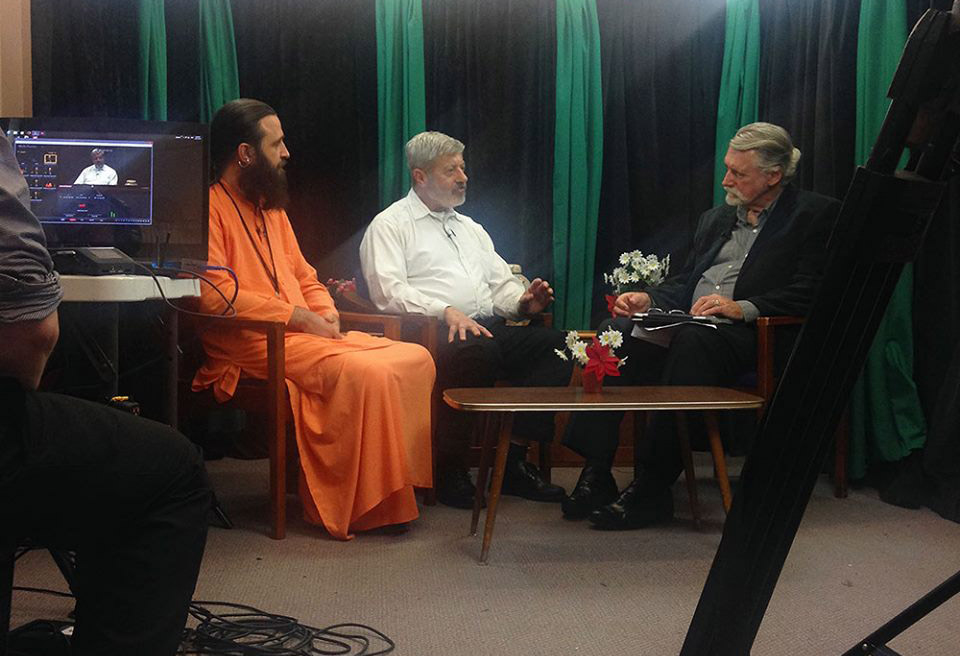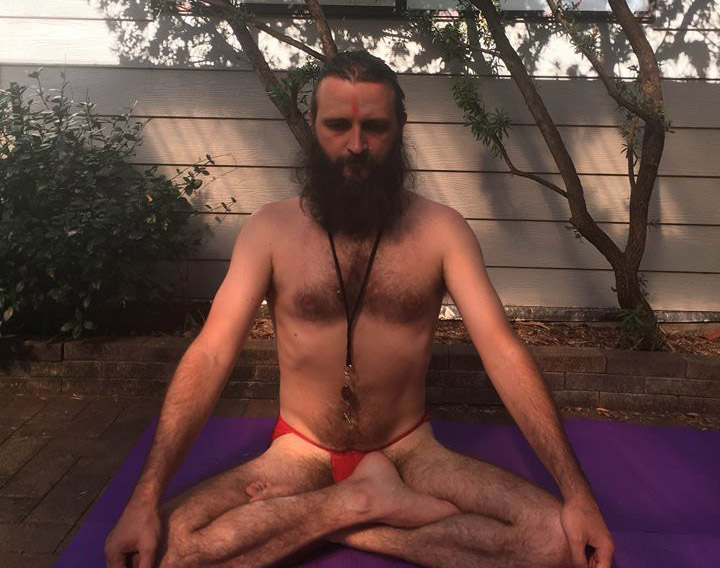Verse 31 Vijñānabhairava-tantra, contracting the eye-brow centre
Summary of discussion on Vijnana-bhairava-tantra made by Guru Yogi Matsyendranath and Rev. John Dupuche
“He quickly permeates [his being] with the [subtle-breath] right up to the crown of the head; [then] breaking through [this spot] by using the contraction of the eye-brows as a bridge, his mind being free of all thought constructs, he transcends all, he is above all.”
तयापूर्याशु मूर्धान्तं भङ्क्त्वा भ्रूक्षेपसेतुना। निर्विकल्पं मनः कृत्वा सर्वोर्ध्वे सर्वगोद्गमः॥ ३१॥
tayāpūryāśu mūrdhāntaṁ bhaṅktvā bhrūkṣepasetunā |
nirvikalpaṁ manaḥ kṛtvā sarvordhve sarvagodgamaḥ || 31 ||
There are four stages in this process.
1. “He quickly (aśu) permeates (āpūrya) [his being] with the (tayā) [subtle-breath] right up to the crown of the head (mūrdhāntaṁ);”
Lilian Silburn, Bettina Bäumer and Jaideva Singh all interpret the word tayā to mean the energy of the subtle breath. Silburn and Bäumer interpret mūrdhāntaṁ to mean the crown of the head and identity this with brahmarandhra. However, Jaideva Singh says the brahmarandhra is a space covered by twelve finger widths from the middle of the eyebrows. There is some uncertainty here. In any case the whole body is filled with subtle breath (prāṇa).
2. “breaking (bhaṅktvā) through this spot by using the contraction (kṣepa) of the eye-brows (bhrū) as a bridge (setunā)”
The next step is to contract the eyebrows. Silburn, Jaideva Singh and Bäumer all readily acknowledge that this technique is now lost. Nevertheless, the following considerations may be of value.
a. Is the technique related to the bandhas that are made in yoga at the perineum or the stomach or the throat? These contractions are designed to overcome blockages (granthi).
b. Although the practitioner is filled with subtle breath and therefore experiences no blockage within his own being, there is perhaps a further step to be taken. Does this next step represent a release of the energies that are contained within him like the rush of waters held back behind the wall or the bridge (setunā) of a dam.
c. Lilian Silburn and Jaideva Singh both speak of the energy of consciousness (citśakti).
d. The act of contracting the eyebrows occurs when mind and will are focused on something. It is the projection of energy.
e. So, according to the Devīmahātmya, when Durga was involved in battle with the demons, she frowned, and from her frown Kālī leaped forth to destroy them.
f. The eye-brow centre, where the iḍā and piṅgalā come together and join their energies, is also the cakra point of ājñā, which means authority.
g. Bäumer makes the comment (p. 77 fn. 69) that eye-brow centre is where the guru places sandal paste, for example, so as the bring the disciple to a heightened consciousness. The practitioner, having filled himself with prāṇa and not distracted by any limited thought constructs (see below), now contracts his eye-brows. This has the effect of projecting the energy beyond the limits of the body into the highest realm. In this way the practitioner is transported to a consciousness he did not have before.
3. ‘his mind being free of all thought constructs’
The practitioner is no longer distracted by the multiplicity of thoughts, but is completely focused, spontaneous, free of calculation or doubt, or of any attempt to categorize and understand. There is totality in his action.
4. ‘he transcends all, he is above all’
The practitioner transcends his own body and achieves a consciousness, which is beyond all limitation. The repetitive nature of the phrase ‘he transcends all (sarvagodgamaḥ), above all heights (sarvordhve)’ emphasizes the surpassing nature of this consciousness.








